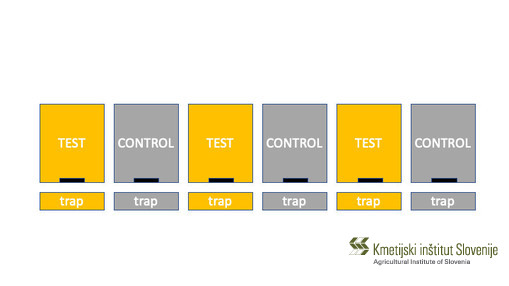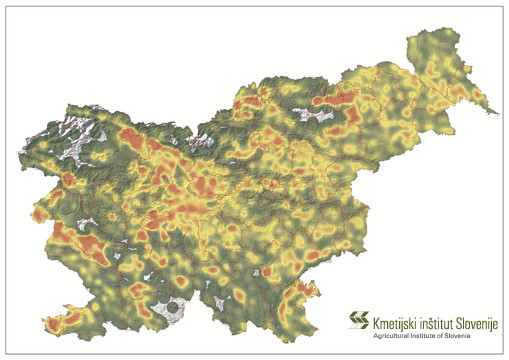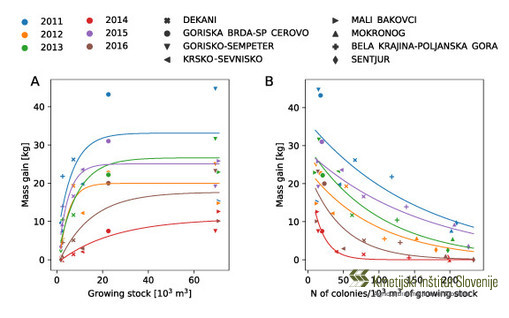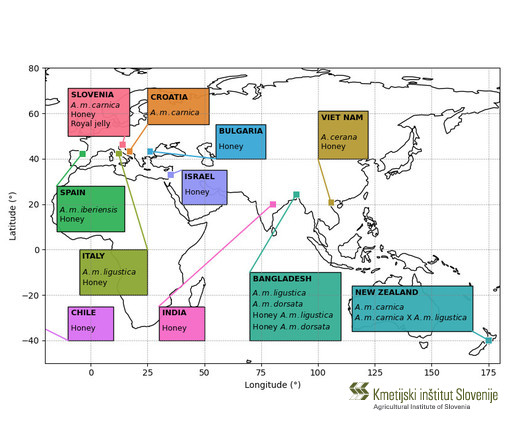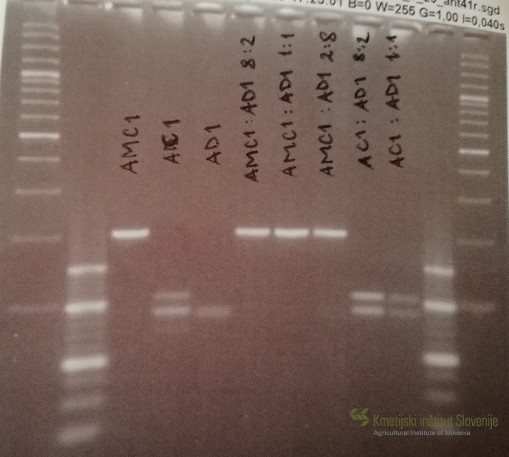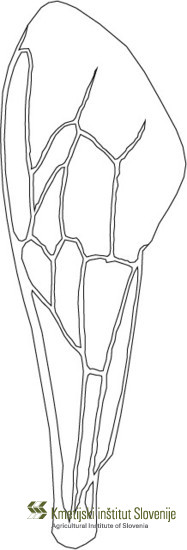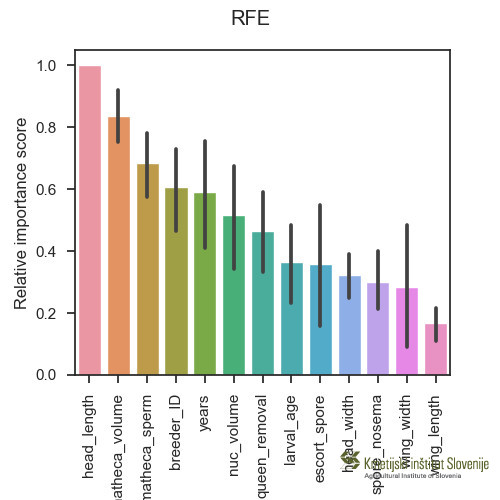Group efforts are focused on several fields, from honeybee diet, authentication of honey sources to molecular work related to breeding and honeybee health.
Novel use of EPIC markers for honey source authentication
DNA is a trace that organisms are leaving behind; honey is such source of DNA. Adulteration of honey is ranked fifth among food types world-wide. Certain honey types reach higher prices due to their source in indigenous feral honey bees. Honey from western honeybee A. mellifera is often used as a cheap substitute. In our work we show that it is possible to isolate mitochondrial and nuclear DNA fragments directly from honey and determine honey source to certain level. The work was published in Food Control.
- Moškrič A, Mole K, Prešern J. 2020. EPIC markers of the genus Apis as diagnostic tools for detection of honey fraud. Food Control, 121: 107634.
Accumulation of Lithium in honeybee products and tissues
Lithium is a candidate for a novel Varroa treatment. High efficacy was demonstrated in the past. In our paper we address potential lithium accumulation in both tissues and products as a consequence of anti-varroa application. Lithium is potentially problematic due to its effects on human well-being and its interferance in ontogenetic processes. We show increased lithium levels in both honey and pollen along with adult and larval tissues. We also noted increased mortality in adult honeybees in comparison with control. The investigation was performed with collaboration with Dr Martin Šala from National Chemistry Institue and published in Food Chemistry.
- Prešern J, Kur U, Bubnič J, Šala M. 2020. Lithium contamination of honeybee products and its accumulation in brood as a consequence of anti-varroa treatment. Food Chemistry, 330: 127334.
Novel approach to the evaluation of toxic effects
The method used to monitor the impact of lithium in a previous paper was adopted from olfactory neurophysiology. It is based on the statistical significance of the cumulative mortality slope change. The work was published in the MethodsX.
- Prešern J. 2020. Neurostatistical approach to toxicological testing in honeybees. MethodsX, 101077.
Effects of probiotics on selected immuno-related parameters in honeybees
Probiotics are considered an important food suplement in vertebrates, stabilizing digestive tract flora and contributing to individual health status. In analogy, probiotics are growing in fashion also in honeybees. We have investigated the effect of EM probiotics on selected parameters. The research was done in collaboration with Veterinary Faculty of Zagreb University and Ruđer Bošković Institute and published in Insects.
- Tlak Gajger I, Vlainić J, Šoštaršić P, Prešern J, Bubnič J, Smodiš-Škerl MI. 2020. Effects on Some Therapeutical, Biochemical, and Immunological Parameters of Honey Bee (Apis mellifera) Exposed to Probiotic Treatments, in Field and Laboratory Conditions. Insects, 11(9): 638.
Availabilty of resources and colony density
We show that both availability of resources and colony density define the mass gain of the colonies during the flow and consequently limit the beekeepers' income. Colony density was calculated as a number of colonies over the resource unit. Work was done in collaboration with dr Milan Kobal from University of Ljubljana and published in the Forest Ecology and Management.
- Prešern J, Mihelič J, Kobal M. 2019. Growing stock of nectar- and honeydew-producing tree species determines the beekeepers' profit. Forest Ecology and Management, 448: 490--498.
Queen quality paramaters
There are several parameters which presumably describe the quality of the honey bee queens. Among them is a queen body mass, which is probably the easiest to monitor and the most accessible to the consumer. We pooled anatomical, physiological, pathological and rearing parametrs and used the state-of-the-art machine learning to elucidate those parameters that contribute most to the queens' body mass. Work was published in Apidologie.
- Prešern J, Smodiš Škerl MI. 2019. Parameters influencing queen body mass and their importance as determined by machine learning in honey bees (Apis mellifera carnica). Apidologie, DOI: 10.1007/s13592-019-00683-y
